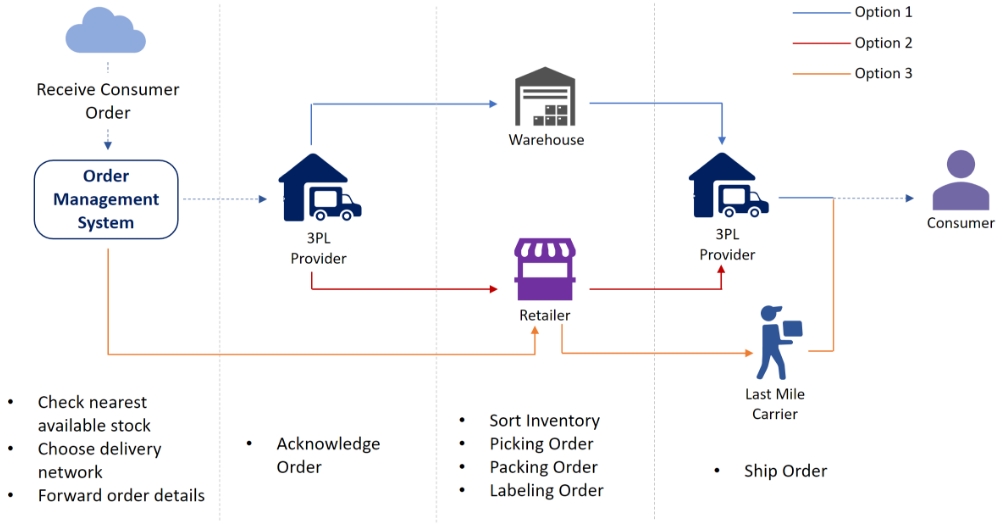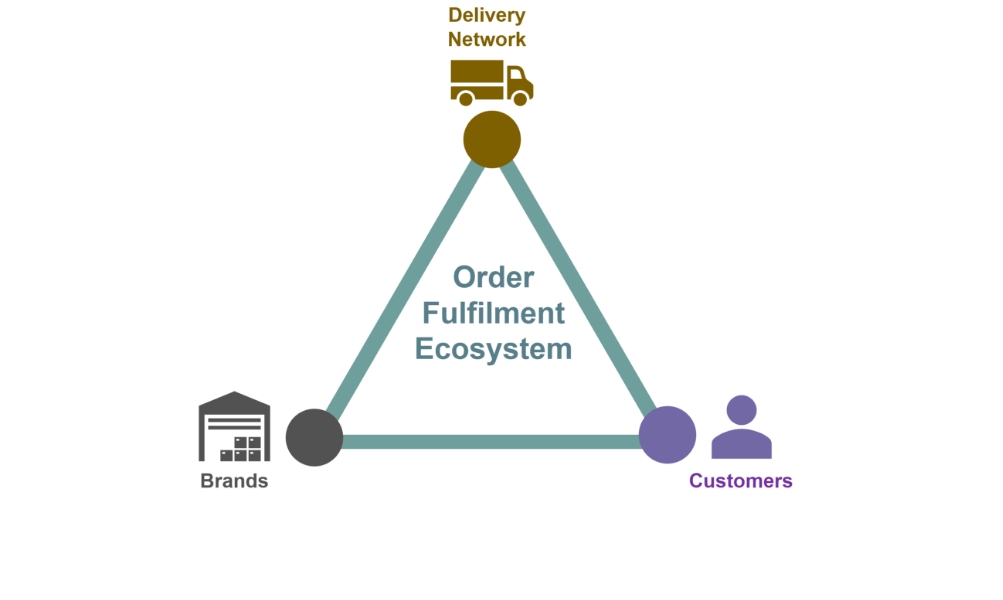Figure 1: Order Fulfillment Process Flow
As depicted in Figure 1, brands can ask the 3PL provider to pick the item from warehouse or from their retail store or utilize last mile carriers to fulfil orders from retail store. This choice depends on consumer's preferred delivery time and location, product availability, packaging requirements, etc. Consequently, the complexity of choice varies from one order to another, presenting a significant challenge for brands.
To operate profitably in the D2C landscape, brands must confront the following related challenges:
Distributed Inventory: In the D2C model, brands must locate inventory that is closest to the consumer. This means that brands count inventory as items available not only in their warehouses but also the items present in the nearby retail stores. To process individual orders efficiently, brands must account for all inventory distributed across this network.
Order Size Variability: The shift to D2C results in daily processing of orders from consumers, in addition to periodic orders from retailers and distributors. Moreover, order sizes vary from smaller individual parcels to bulk shipments, altering the dynamics of order processing.
Local Delivery Partnership: To successfully implement D2C model, brands need carrier partners capable of delivering bulk orders in addition to small individual parcels.
Order Processing Enhancements: Processing daily individual orders poses a different set of challenges compared to bulk shipments at regular intervals. Brands must consider various parameters such as delivery region, delivery time, stock availability, and more when choosing the appropriate fulfillment channel for each order.
Integrated Ecosystem: In the order fulfillment process, the ecosystem comprises consumers, brands, 3PLs, regional delivery partners, and a network of retailers, all exchanging data daily for multiple orders. Additionally, order cancellations and returns can occur at various stages, from after online payment to after the consumer has used the item for a few days. Different domains, including warehouse, logistics, finance, and customer care, become involved in processing cancellations or returns depending on the stage at which the order is cancelled. Without a collaborative system facilitating accurate information exchange, brands will struggle to implement order fulfillment in the D2C business model.
To address these challenges, it is essential to examine all stakeholders involved in the end-to-end process and transform it by considering each stakeholder's requirements and contributions.
 Locations
Locations





